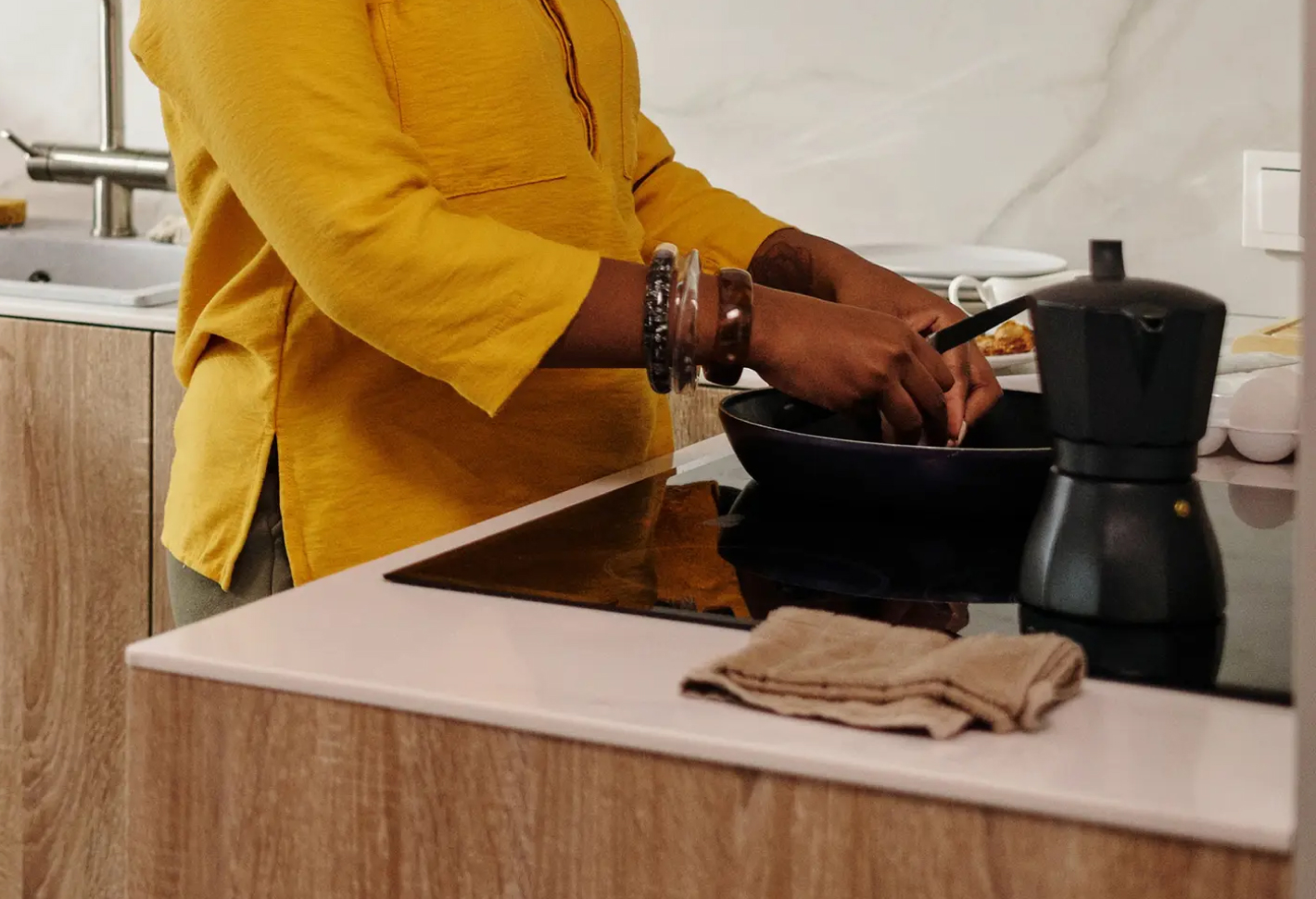Weight Considerations for Cast-Iron Pans on Induction Cooktops
Written By James Morgan
For barbecue enthusiasts, achieving the perfect steak sear or beautifully charred vegetables often depends on selecting the right cooking tools. Cast-iron pans have been a beloved choice for their exceptional heat retention and rugged durability. Yet, as kitchens increasingly adopt induction cooktops, a frequent query emerges: How does the weight of a cast-iron pan affect its performance on an induction stove?

Induction Cooking Basics
Induction cooking employs cutting-edge electromagnetic technology to directly heat pots and pans. This innovative method necessitates cookware that contains magnetic materials, making cast iron an ideal option. If you're new to induction cooking, learn more about how it works at HowStuffWorks. However, its crucial to consider the weight of the pan. Heavier pans can present challenges on induction cooktops, particularly if the weight is not evenly spread.
Importance of Cast-Iron Weight
The weight of a cast-iron pan significantly impacts both cooking performance and the efficiency of your cooktop when using induction. While a heavier pan tends to take longer to heat up due to its mass, it excels at heat retention, which is essential for achieving that sought-after sear. Conversely, excessive weight can place undue stress on the cooktop, especially if it's not engineered to handle hefty cookware.
For those barbecue aficionados accustomed to using their cast-iron pans on outdoor grills, adapting to an indoor induction cooktop may necessitate revisiting their cooking strategies. The pan's weight can influence how quickly it responds to heat adjustments, a notable change from the direct flames of grilling.
Selecting the Right Cast-Iron Pan for Induction Cooking
When choosing a cast-iron pan suitable for induction, it's essential to consider both its size and weight. A excessively heavy pan can be cumbersome to handle, particularly when transitioning it from stove to table. Conversely, a lighter pan might not deliver the heat retention that barbecue lovers depend on.
One practical tip is to choose pans with flat bottoms for optimal contact with the induction surface, which can promote even heat distribution. Additionally, for further guidance on effectively using cast iron on various heat sources, check out this Lodge Cast Iron guide.
Finding the Right Weight and Functionality
Striking the ideal balance between weight and functionality is crucial. A pan that is too light may not offer optimal cooking results, while one that is excessively heavy can be tricky to maneuver. It's vital to explore and determine a weight that aligns with both your cooking preferences and the capabilities of your cooktop.
For barbecue lovers, maintaining this balance is essential for a seamless transition from outdoor grilling to cooking indoors. To delve deeper into the advantages and disadvantages of induction cooking, Consumer Reports provides comprehensive insights.

Common Questions
Can all cast-iron pans work on induction cooktops?
Absolutely! As long as the pan features a flat bottom and is made of magnetic materials, it can be utilized on an induction cooktop. However, be cognizant of the weight to prevent straining the cooktop.
Do heavier cast-iron pans perform better on induction?
Heavier pans are better for heat retention, making them excellent for searing. Nonetheless, they often take longer to heat up, so finding an optimal weight is essential.
How should I care for my cast-iron pan while using it on induction?
Consistent seasoning and proper maintenance are key. Avoid using harsh scrubbing materials, and ensure the pan is thoroughly dry before storing to prevent rust.
For barbecue lovers seeking to maximize their indoor cooking experience, understanding the implications of cast-iron pan weight on induction cooktops is vital. With the right pan, you can achieve flavors and sears that compete with any outdoor grill. For further expert advice, refer to this piece on induction compatibility for cast iron.



